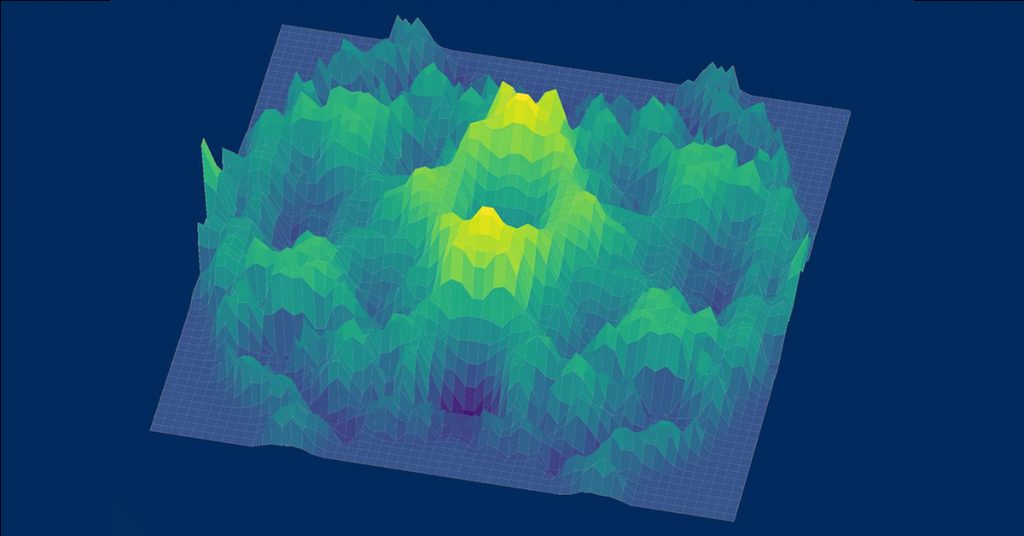A novel approach has been developed by researchers from Stanford and Nanyang Technological University (NTU) in Singapore, enabling the control of neurons without the need for invasive implants.
This technique involves the injection of a molecule called TRPV1, known for its involvement in our perception of heat from capsaicin in chili peppers, into the brains of mice. By using infrared light beams, researchers were able to remotely manipulate specific brain cells up to a distance of one meter (approximately three feet).
This non-invasive method allows for the study of natural behaviors, such as social interaction among mice, without the limitations of traditional head-mounted fiber-optic tethers that can disrupt normal behavior. Guosong Hong, assistant professor of materials science and engineering at Stanford, highlighted the challenges of studying animals’ natural behavior within a social group using invasive techniques.
Researchers have devised a groundbreaking method that enables the control of neurons without invasive implants, offering an opportunity to study the natural behaviors of mice while simultaneously gathering insights into their brain activity. The technique, recently published in Nature Biomedical Engineering, expands on the concept of optogenetics, a previous innovation developed at Stanford University. In the analogy of the brain as a complex electrical switchboard, manipulating the nodes by activating or deactivating neurons provides valuable insights into its functioning. However, deciphering the neural circuitry and exerting control over neurons has posed significant challenges. This new switch-flipping approach, utilizing infrared waves, opens up exciting possibilities for understanding the brain in a non-invasive manner.
In the field of optogenetics, researchers utilize light-sensitive proteins derived from algae, which are inserted into genetically modified neurons to exert control over them through light stimulation. Although this technique has proven valuable, it does possess certain limitations, as explained by Hong. The human body’s opaqueness creates obstacles in delivering visible light to the desired neurons, often necessitating invasive implants or skull-mounted tethers. Aside from the potential damage to tissues caused by these methods, they also hinder the study of brain activity during natural behaviors, albeit within the confines of a laboratory setting.
However, while visible light encounters difficulties in penetrating the scalp, skull, and brain, infrared light does not. Infrared light beams can reach the targeted brain cells, which existing optogenetic approaches fail to respond to due to differences in wavelength. To address this challenge, Hong and his team turned their attention to another characteristic of infrared light: its ability to generate heat.
Fortunately, there exists a molecule that detects heat, perfectly suited for the task at hand. TRPV1, known as the capsaicin receptor, has previously been used to grant mice the ability to perceive infrared light. Moreover, it shares similarities with the protein used by pit vipers to locate warm prey in the darkness of night.
To equip specific neurons in mice with the heat-sensitive molecule, the researchers initially relied solely on TRPV1 channels. However, they discovered that the mouse brain’s sensitivity to infrared signals fell short compared to rattlesnakes’ remarkable abilities in detecting such signals. Recognizing this limitation, the team sought assistance from the field of materials science.
To enhance the infrared light’s effectiveness, the researchers employed nanoparticles known as MINDS (Materials for Infrared Neuronal Dynamics and Stimulation). These nanoparticles, composed of materials similar to those found in solar panels and LEDs, were injected into the mouse brain, effectively amplifying the infrared signals.
By incorporating both the TRPV1 channels and MINDS on one side of the mouse motor cortex, which governs movement, the researchers successfully induced mice to deviate from their random exploratory behavior and navigate in circles using the infrared beam, akin to a rowboat with a single paddle.
Hong expressed his excitement when the initial success validated their approach, while acknowledging that further validation and testing were necessary. Nevertheless, he felt confident in the potential of their technology.
The researchers were also able to exert control over brain cells across the entire depth of the mouse brain. When the technique was applied to dopamine neurons, the mice exhibited an “addiction” to the infrared beam, despite their inability to visually perceive it, spending a significant portion of their time beneath its influence.
Hong envisions immediate applications of the TRPV1 and MINDS technique in studying animal brains during natural behavior. Concurrently, the team is working towards streamlining their methodology, aiming to simplify it into a one-step process.









